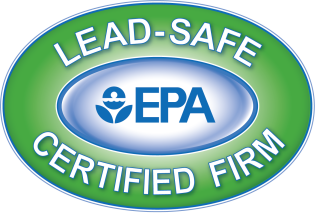Crawl spaces are notorious for mold. The air inside crawl spaces is poor quality, and can even be sucked into your home by your HVAC system. Can you clean mold out of your crawl space yourself? What products are effective and safe to use? Come read and learn all about crawl space mold removal products and safety.
DISCLAIMERS:
Blog information is NOT intended to provide or replace medical advice. NO information on this site should be used to diagnose, treat, prevent or cure any disease or condition.
*As an Amazon Associate we earn from qualifying purchases.
Suggestions for products to use are just that, suggestions. You know yourself and your home best. Please do your own research on any product you use in your home or on your skin, and learn all the facts for yourself. Thank you.
SYMPTOMS OF MOLD IN YOUR CRAWL SPACE
How do you know if you have mold in your crawl space? Musty smells (think wet dog, old gym sock type smells) in your home or coming from your crawl space may be the first clue you have a mold problem. Mold grows because of excess moisture. Anything that causes excess moisture in your crawl space can cause mold to grow such as:
- condensation on air conditioning ductwork or water pipes
- leaking pipes
- moisture damage
- high humidity in the living area
- buckled hardwood floors
- insect infestations
- rot of floor timbers
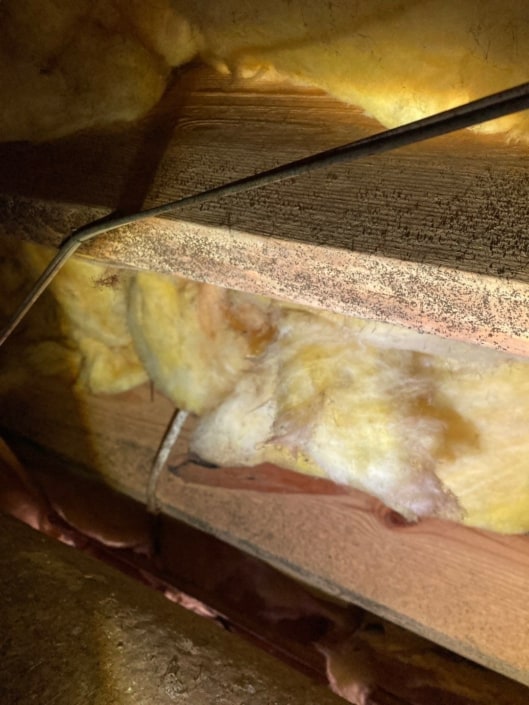
WHAT IS MOLD ANYWAY?
Molds are fungi. Fungi are neither animals nor plants. They inhabit a kingdom all their own. Fungi are spore producing organisms that feed on organic matter and include: yeasts, mildews, rusts, smuts, molds, and mushrooms. Fungi grow using filaments or hyphae that make up their bodies (mycellia). They digest organic matter externally before absorbing the nutrients.
HOW DOES MOLD GROW?
Molds grow from microscopic spores that are universal. You can find molds on every continent, and in almost every type of environment. Mold needs 4 things to grow: oxygen, moisture, a food source, and warmth. Molds grow inside of their food sources. They can penetrate deeply into drywall, carpets, underneath kitchen and bathroom sinks, and more. Mold can even grow inside wood floor joists.
IS CRAWL SPACE MOLD A HEALTH PROBLEM?
In one word… Yes. Mold is an insidious, invisible predator in your home. It hides in places no one ever thinks to look like under cabinets, in crawl spaces, and behind furniture. People may spend weeks, months, and even years fighting illness, and never know what they are really fighting…mold. Many of our customers find us after a recommendation from their doctor, that they may in fact have a mold problem, and not just an illness.
Mold is most often associated with allergies, but mold is much more menacing than people know. While all molds have the potential to cause irritation and allergy symptoms, molds can also cause much more dangerous health problems including: fungal poisoning and mental health problems.
You can learn more about mycotoxin poisoning in our article: The Health Effects of Black Mold.

WHY ARE CRAWL SPACES PRONE TO MOLD GROWTH?
Generally, the soil in a crawl space is drier than the soil around the foundation. This results in moisture wicking into the crawl space from the soil outside. Once inside the crawl space, the moisture evaporates into the air and the water vapor moves up and settles on ductwork, floor joists, subfloor, and/or floor insulation.
During the summer, the air and surfaces inside a crawl space are generally cooler than the outdoor air. As warm, humid air moves into a crawl space through the foundation vents, it begins to cool, resulting in an increase in relative humidity. Condensation from water vapor gathers on the ductwork, floor joists, subfloor, and/or floor insulation, and of course you know that moisture leads to mold growth.
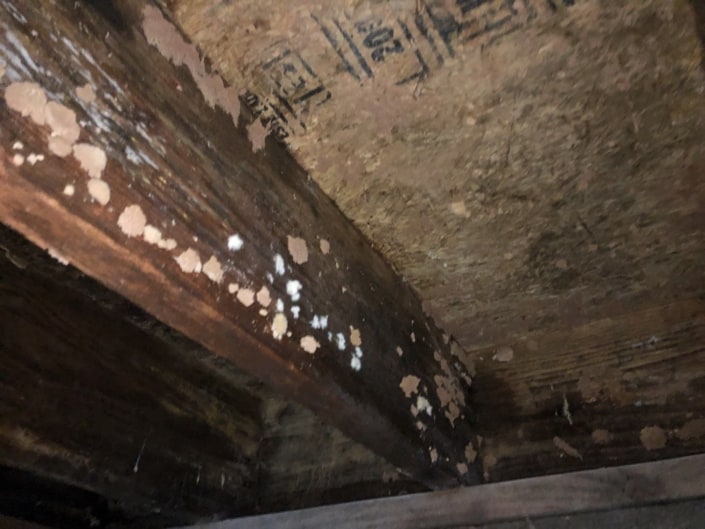
Most Crawl Spaces Are Inadequately Ventilated
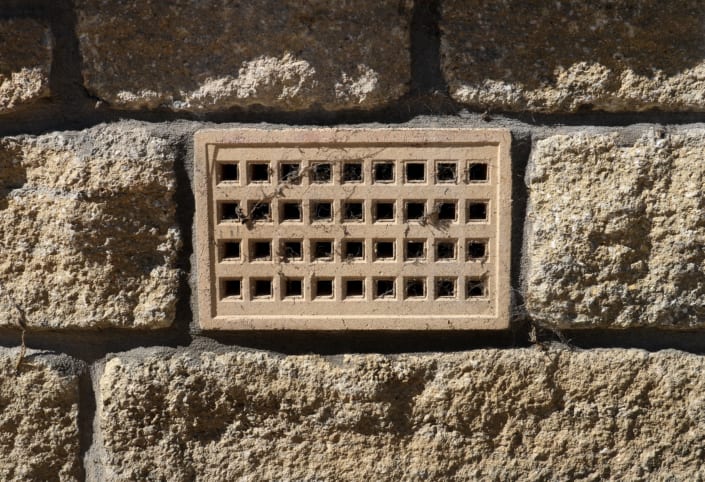
Although most crawl spaces are vented, they are still passive systems, meaning that ventilation only occurs due to pressure changes and wind that happens to blow through the vents. Few crawl spaces have powered ventilation systems, which can create their own problems. Limited ventilation results in an accumulation of stagnant air. In this environment, mold, radon, and moisture (which attracts termites and rodents) can build to dangerous levels.
Warm air inside a home rises and escapes through the attic, drawing in cooler air from lower levels, including outdoor air and air from the crawl space. Running exhaust fans in the kitchen and bathrooms creates a negative pressure inside the home. This negative pressure also draws in air from outside the home and from the crawl space.
YOUR HVAC SYSTEM MAY BE CIRCULATING DIRTY AIR
HVAC systems are frequently located in the crawl space. Most HVAC systems, even many new systems, have some leaks around the air filter, between individual sections of ductwork and at the duct boots. These leaks reduce system efficiency and allow dirty crawl space air into the system and your home.
Although your crawl space is not part of the living space of your home, you should think of it as an extension of the breathing space of your home when it comes to indoor air quality. Like it or not, you are breathing air from your crawl space.
To learn more check out our post: HVAC System in Your Crawl Space? You May Be Breathing Dirty Air.
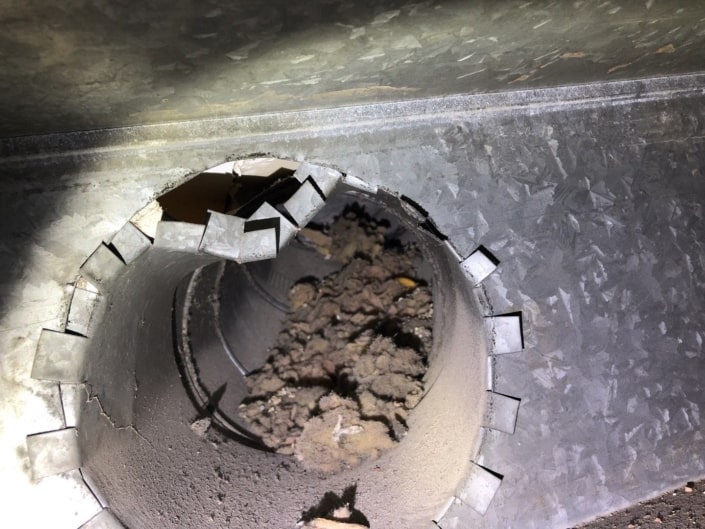
WHAT TO CONSIDER WHEN CHOOSING THE BEST CRAWL SPACE MOLD REMOVAL PRODUCTS
There are several things to consider when choosing crawl space mold removal products including: location, amount of time or effort required, and above all safety.
The location (inside your crawl space) of the work to be done is not a great place to work. (Trust us we should know!) It’s dirty, cramped and you usually have to work on your back or knees. Not a lot of fun. To learn more about how professionals approach cleaning a crawl space check out our post: Ten Things You Most Likely Didn’t Know about Crawl Space Mold Removal.
The amount of time you expect to spend cleaning mold in your crawl space may surprise you. It takes some time to clean away mold (not kill it). The only way to be sure you have removed all the mold is to remove the food source for the mold. If you have an area of less than 10 square feet of mold damage, you may be able to clean it yourself. More than 10 square feet, and you really do need professional help.
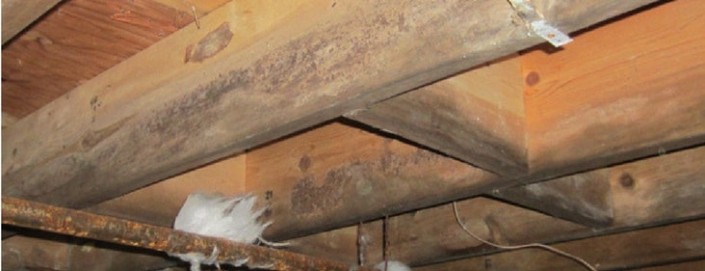
Ok, so it’s a small area of your crawl space, and it seems like you’ve fixed any moisture problems you have. You’ve determined you can DIY this… what do you do now? What kinds of safety issues are there when cleaning mold?
What To Wear To Remove Mold Safely
Before even choosing a cleaning product, you should know what kind of safety equipment to wear to clean a moldy surface.
The basic equipment consists of an N-95 respirator, goggles or eye protection, & protective gloves with long cuffs. Long pants, a long sleeved shirt and waterproof boots are important to wear as well. Closed toed shoes are a good substitute for boots, especially if you are working on a small area of mold.
Mold is a respiratory irritant and allergen, so a mask with a N-95 respirator is important. A simple dust mask will NOT protect you from the mold spores. To learn more about face masks see our post: In-depth Guide to Face Masks: Allergies, Grass Cutting, and COVID-19.
For more information about safety, visit: What to Wear before entering a Home or Building with Mold Damage by the CDC.
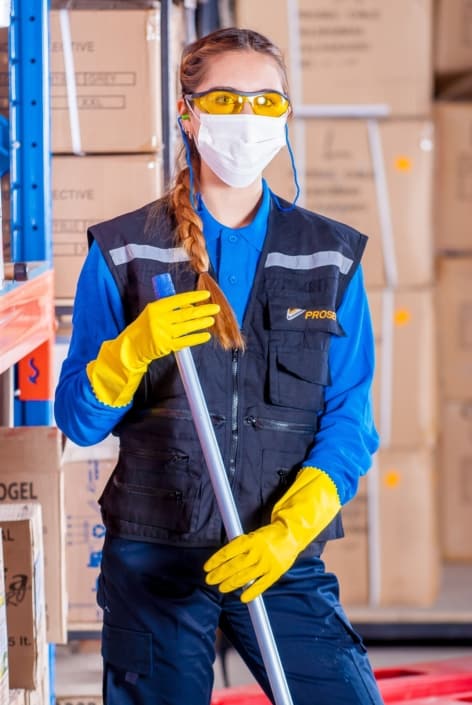
Proper Ventilation
Ventilation is very important when cleaning mold. Fresh air in your crawl space can both help you breathe better, and remove odors from cleaning. Add a fan in the crawl space door and open the vents to help with ventilation when cleaning.
When cleaning inside your home, you also need good ventilation. Mold spores can fly around the room and enter other areas of your home. Before beginning, block off the room to be cleaned from the rest of the home. Close the door, and stop air from flowing into other rooms. Add a fan in a window or use the bathroom ventilation fan when cleaning. Good ventilation can prevent mold spores from entering other areas of your home.
Location
Think about the location and type of surface to clean. Is the surface tile, linoleum, or ceramic? What about carpet, wood, drywall, or fabric? Hard and soft surfaces require different strategies to remove mold.
Hard surfaces generally are able to be cleaned, and most of the time mold will not grow back if it is completely removed, and the moisture problems have been fixed. If you’re familiar with our blog, you know that before you can remove mold, you have to fix the moisture problem that caused it in the first place.
Softer surfaces (such as insulation, carpet, drywall, upholstered furniture, etc.), are not able to be cleaned enough to keep the mold from growing back. You will probably have to completely remove the soft surfaces and throw them in the trash. Be sure to properly bag all soft materials in closed plastic trash bags.
When you have softer surfaces such as insulation, carpet, drywall, and furniture that have been contaminated with mold, it’s probably time to call the professionals. It is very difficult to tell just how much of the materials have really been invaded by the mold and you may miss a lot of it.
A professional mold inspection should be your first order of business at this point. Check out our post How to Choose a Mold Removal Company before hiring anyone. We let you know the questions you should ask and the answers the company should know. Don’t get scammed, get smart!
How safe is my mold cleaner?
Household cleaners are not food, drugs, or firearms, so the FDA (US Food and Drug Administration) does not regulate them. This means that the products can contain any combination of chemicals, and that they are not tested for effectiveness.
The EPA (Environmental Protection Agency) only requires manufacturers of cleaning products to list ingredients that are active disinfectants or could cause potential harm. Manufacturers of commercial cleaning products for homes and businesses are not required to list all of their ingredients for consumers by any agency of the United States. They can claim that ingredients are a trade secret, and not disclose them on the product labels.
The truth is that they can legally use just about anything in a cleaning product leaving you the consumer in the dark about its true safety and effectiveness.
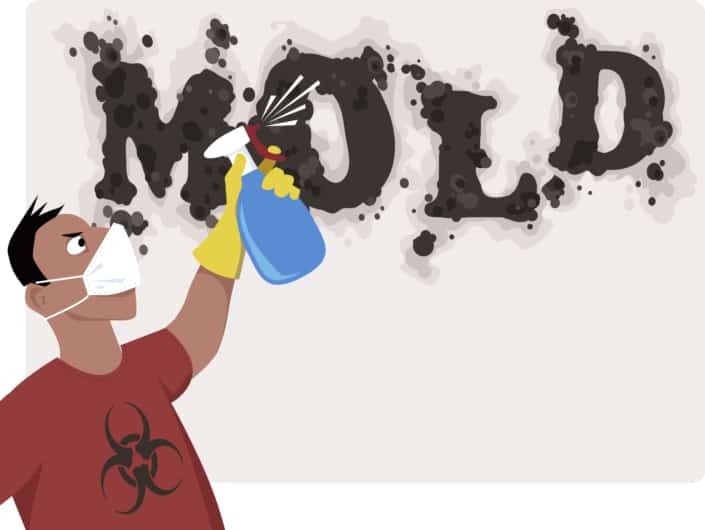
The Environmental Working Group (EWG) is a “non-profit, non-partisan organization dedicated to protecting human health and the environment.” EWG has created a database and guide for healthy cleaning in an easily searchable format called ‘EWG’s Guide to Healthy Cleaning.’ The EWG Guide can help you to find safer cleaning products and check products that you already use for safety. You may find that the products you already use are not safe or that they can cause respiratory distress.
The EWG Guide “contains information and hazard assessments for 2,109 products, 197 brands and more than 1,000 ingredients.” Product ingredients are rated with a high, moderate, or low risk based on different categories. Products are given a final rating of ‘A’ to ‘F’ based on the safety of chemicals present in the product and whether or not the ingredients are listed completely on the label. Ratings of ‘A’ being the safest, and ‘F’ being the most dangerous or that have the least information available. To learn more about how the EWG guide was created go to About EWG’s Guide to Healthy Cleaning.
It smells good. It’s clean…right?
WRONG. Smelling good does not indicate that something is clean! In fact, ‘fragrance’ can be anything in a product that gives it a smell from essential oils from plants to industrial petrochemicals. Cleaning and personal care product manufacturers are required to list their ingredients on the label of the products. However, because of a loophole in government regulations (specifically the Federal Fair Packaging and Labeling Act of 1973), they are not required to list any fragrance ingredients. This means that they can use any chemical they choose to add scent to a product, including dangerous, allergenic, and even toxic chemicals. To learn more about hidden fragrance chemicals in personal care products go to: Not So Sexy – Hidden Chemicals in Perfume and Cologne.

Our government does not regulate cleaning products or personal care products in a way that allows consumers to have all the facts about a product before they use it. Because of this, we urge you to learn all you can before using a product in your home or on your skin.
Cleaning products affect air quality, especially if ventilation is not used during cleaning. Remember whether sanitizing or disinfecting, use good ventilation when using cleaning products.
Best DIY Crawl Space Mold Removal Products
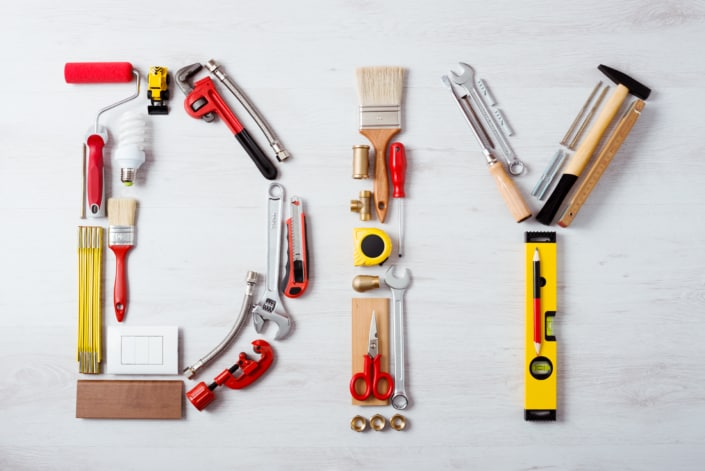
Think of removing mold like removing dirt. You wouldn’t just spray dirt with a cleaner and call it clean! You have to remove the dirt from the surface. When removing mold, be sure to wet the area with your preferred cleanser thoroughly. Dry mold spores will explode all over the room if you try to dry wipe it away! Be sure to wear the proper safety equipment (N-95 respirator, goggles or eye protection, & protective gloves with long cuffs), and ventilate the room to the outdoors when cleaning.
The best mold removal products are those that are non-toxic and safe to use around children and pets. There are 3 simple ingredients you can safely use to clean away mold in your home: white vinegar, baking soda, and hydrogen peroxide. Remember NOT to mix these ingredients! Keep reading for maximum cleaning power and safety!
Hard Surface Cleaning
To clean a hard surface (like a shower stall, tiles, toilet, sink, or floor), simply add hydrogen peroxide OR white vinegar to a clean, empty spray bottle undiluted. Never mix these chemicals! Choose one or the other.
Hydrogen Peroxide
When using hydrogen peroxide, spray the area to clean thoroughly, and let it sit for 10-15 minutes. Then, scrub the area, and rinse it clean with water. Repeat if needed.
White Vinegar
For white vinegar, spray the area to clean thoroughly, and let it sit for at least 15 minutes or up to one hour. Then, scrub the area, and rinse it clean with water.
You can add 5 to 10 drops of tea tree essential oil to the white vinegar spray to increase the disinfectant power. Tea tree essential oil is antifungal (kills fungi), antiviral (kills viruses), and antimicrobial (kills microbes, including bacteria). We advise people with allergies or asthma to use this oil with caution, as it can be irritating to the skin and lungs. To learn more about essential oils and how to use them safely check out our post: Essential Oils For A Healthy Home.
Baking Soda
To use baking soda, add a teaspoon to a tablespoon of baking soda to a clean empty spray bottle and fill the bottle ¾ full of hot water. Shake to dissolve. Spray the area and use a scrub brush to clean the mold away. Then, rinse the area with clean water.
When using baking soda, it usually works best with a white vinegar spray following the baking soda, but not at the same time. The baking soda should be scrubbed away and rinsed before spraying with vinegar. Baking soda is a base and vinegar is an acid. When they are used together, they react to form carbon dioxide gas and heat. The chemicals then are neutralized (changed to a neutral pH of 7) and have less cleaning power than they would if they had been used separately.
Best Commercially Available Crawl Space Mold Removal Products
The best mold removal products are those that are non-toxic and safe to use around children and pets. There are 2 commercially available mold removal products that we recommend. Both are cleaners that are safe to use in your home and near children or pets. Remember that you should always wear personal protective equipment when cleaning mold, no matter how safe your cleaner may be.
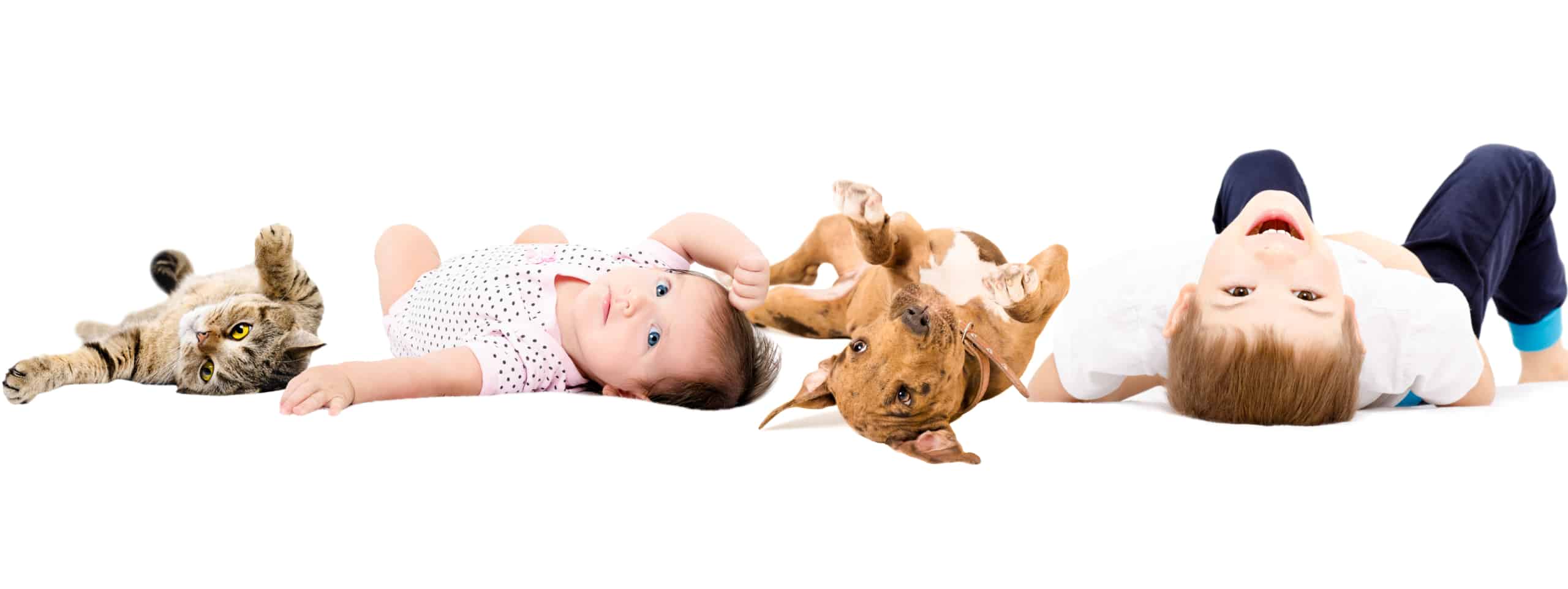
The first is Concrobium Mold Control Cleaner. You can check out the EWG’s Guide to Healthy Cleaning | Concrobium Mold Control Cleaner Rating here.
To purchase Concrobium Mold Control Cleaner from Amazon, click here.
The other product we recommend has not been reviewed by EWG, however, it is an excellent and safe product that we can highly recommend. Bioesque Botanical Disinfectant Solution kills fungi and mold within 3 minutes. It also kills bacteria and viruses including COVID-19.
To learn more about this product and its safety check out the company’s website at: Bioesque’s Botanical Disinfectant Solution.
To purchase Bioesque Botanical Disinfectant Solution from Amazon, click here.
No matter what product you choose, be sure to wear proper safety equipment, ventilate the room to the outdoors, and follow all product directions.

KNOW WHEN TO CLEAN AND WHEN TO CALL
We hope you’ve learned a lot from our post, and feel confident that you can clean mold as a DIY project. However, it’s a good idea to know when to call in the pros. Mold is great at hiding in hard to detect locations such as in drywall, insulation, under sinks, behind cabinets, and in carpet. If the area of mold covers more than about 10 square feet, there is a good chance the mold problem is more than an isolated issue.
Especially if you don’t live in our service area, you should to check out our post: How to Choose a Mold Removal Company. We tell you every question you should ask a mold removal company, and give you the details you need to know.
THE BRANCH DIFFERENCE
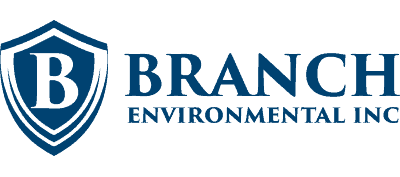
At Branch Environmental, we see each mold inspection as an in-depth investigation, not an opportunity to hand over a guess-based estimate of work. If you think you need a crawl space mold inspection, get in touch with us, and we’ll get down to the source.
Call Branch Environmental. We’re experts not only at mold removal, but at determining and remediating the underlying causes. From hidden mold sources to major contaminants, we can identify exactly what is going on in your home and rid it of environmental toxins, often for good.

